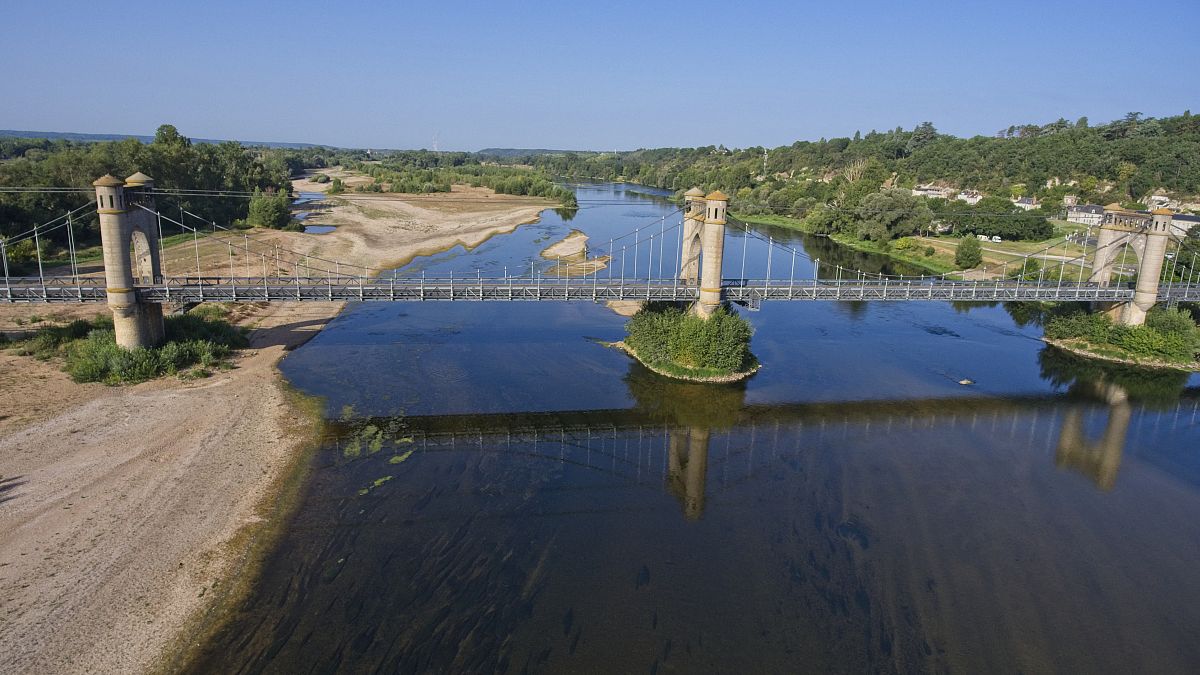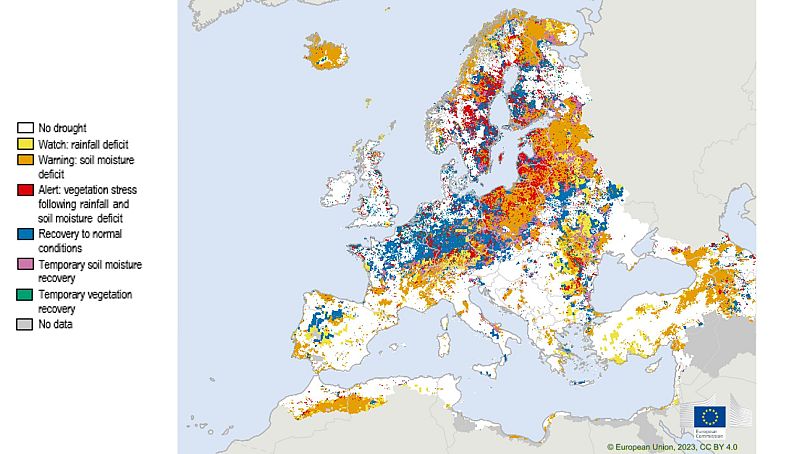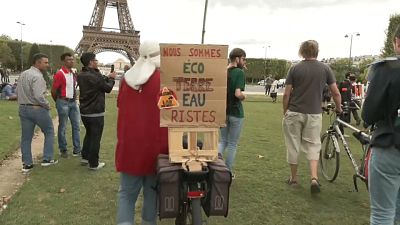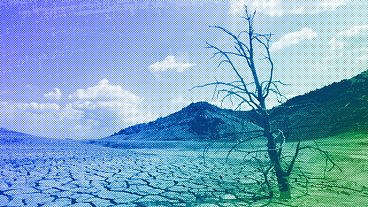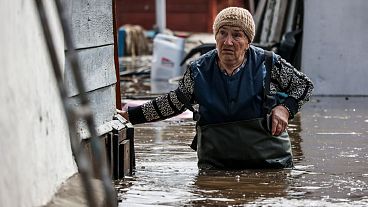Europe is recovering from last year's severe drought thanks to this spring's rain. But under the ground, aquifers are still at a very low level.
Despite the heatwave currently hitting much of Europe, the soil's water status has been improving - but only on the surface, not underground.
On the wane since mid-June, drought has been at its lowest level since early 2022 in Europe and along the entire Mediterranean coastline, according to the latest data from the European Drought Observatory (EDO).
At the beginning of August, some 28% of Europe and the Mediterranean coasts of the Near East and North Africa were affected by drought, the lowest level since January 2022.
Last year at the same time, the drought was twice as widespread (55.8%).
European groundwater tables are still too low
The European indicator, updated every ten days or so, is based on anomalies in rainfall, soil moisture and vegetation condition, depending on the region and type of climate. However, it does not take into account groundwater levels, which remain abnormally low in France, for example.
About 72% of France's groundwater tables are below normal levels according to the Geological and Mining Research Bureau (BRGM). And there is no sign of it getting better because heavy rainfalls following intense heat periods aren't very beneficial to groundwater levels.
"Rainfall during sometimes violent storms encourages run-off and infiltrates little into the soil", explains the last report of the BRGM. Even though these rains lowered or stopped agricultural irrigation reducing the strain on groundwater, rainfalls have to be long and regular for water to infiltrate and fill phreatic tables.
Soil drought is less severe but remains exceptional
While in other parts of the world agriculture is the biggest water consumer, in the European Union it's industry which uses the most freshwater (46%); while agriculture uses 30%.
Although soil drought is less severe this year, after an extremely arid 2022, recent data remains exceptional. The proportion of land affected by drought has rarely fallen below 30% since the spring of 2021. Between 2012, when EDO measurements began, and 2018, it was very rare for it to reach this threshold.
At the beginning of August, the countries of Central Europe, which were severely affected at the start of the summer, were gradually recovering from their drought, with 26% of land affected in Germany (compared with 96% at the peak) and 67% in Poland (compared with 95%).
At the start of the month, the worst affected countries were Lithuania (84%), Armenia and Iceland (82%), and Estonia (76%).
